- NVRA Raja Meena 2 Junior
- Ashtakvarga
- Vedic Jyotish
- Dr. Rudra Dev Tripathi
- UBSPD Publications
- J.N.Bhasin
- Astrology Courses
- Horary Astrology
- Tilak Chand Tilak
- Muthireddy Prabhakar
- Dasha
- Report Consultation
- Dr. Suresh Chandra Mishra
- Dr. K S Charak
- Astrology Books
- Iranganti Rangacharya
- Vijaya Kumar
- Marriage Astrology
- Birth Time Rectification
- Crystal
- O.P.VERMA
- Vani Publications
- Jaimini Astrology
- Mundane Astrology
- Niroge Duniya
- Shizuko Yamamoto
- Ramesh Vaish
- Consultation by Sunil John
- Surya Kanti Tripathi
- Children And Astrology
- Panchang
- Astrology Webinar
- Vagaram Parihar
- Medical Astrology
- Hari OM Gupta
- Bhrighu Astrology
- Vastu Consultation
- Rupa Publications
- Thilak Astro Books
- Authors
- Acharya Ashok Sahjanand
- Vasudev Sadashiv
- Umesh Prasad Mishra
- Rraghavendra Saatvik
- Pt. Kisanlal Sharma
- Satyadev Sharma
- Nakkirar S.Natarajan
- Dr. Jagannath Rao
- Dr.Shanker Adawal
- Ravindra Kumar
- Murlidhar Chaturvedi
- Anneke Huyser
- NISHA GHAI
- PT. REWASHANKAR
- B.B. PURI
- Nilesh Baxi
- A. KARTHIK
- DR. DEEPAK SINGLA
- SETHUMADHAVAN VENKATRAO
- RAJNARAYAN SHASTRI
- HANS DECOZ
- DR. SHYAM PARASHAR
- Manoj Pathak
- Ramkishor Sharma
- Grant Lewi
- SNEH LATA
- Kunwarlal Jain
- M.S. Mehta
- DR. R. NATARAJAN
- CS Patel
- RAMYATAN OJHA
- Harishchandra Vidyalankar
- CHANDER BHALLA
- BENI MADHAV GOSWAMI
- Priya Singh
- Dr Abhimantra
- ASHUTOSH OJHA
- Bodo J. Baginski
- Dayanand Verma
- Dietmar Kraemer
- RAGHUNANDAN SHARMA
- GYOMAYO NAKAMURA
- Satish Sharma
- PREM KUMAR SHARMA
- Khemraj Shri krishnadas
- Santosh Sharma
- SANJEEV GADHOK
- NAVIKANTA JHA
- Swami Mukundananda
- Sadhvi Vrinda Om
- Dr. Rajbeer Singh
- Shri Ram Gopal Goswami ji
- R. SELVAM
- Yogesh Kumar Bansal
- Kamalkant Panday
- Chandrashekher Sharma
- Sage Gargacharya
- SUMEET CHUGH
- N. N. Saha
- Andree Leclerc
- NIMMI ARORA
- USHA LAD
- KAULACHARYA JAGDISH SHARMA
- K. Jaya Sekhar
- Neeraj Gupta
- Prem Bhatia
- P.K. SARNA
- Dr. Radhakrishna Shrimali
- Dinesh Vyas
- ABHINAV MISHRA
- RAMESHWAR CHANDRA SHASTRI
- DR. CHANDRAMOHAN JHA
- Shivesh Prasad Mishra
- Vikash Sharma
- G.V. Prabhakara Murthyc
- Mridula Trivedi
- N E MUTHUSWAMY
- Brahamananda Tripathi
- V.P. GOEL
- Meenakshi Priyadarshini
- ASHISH GUJRAL
- Pradeep Bhushan Goel
- Pawan Ballabh Thapliyal
- Dharmadatt Vaidh
- Amadea Morningstar
- Heinrich Zimmer
- GOPAL SHARMA
- PT. TARACHANDRA
- RAM LAL SHAH
- C. H. Asrani
- HARISH JOHARI
- Shristi Sahoo
- Partha Sarathi Rout
- SHRI RADHARAMAN 'SUMAN
- Tilak Chand Tilak
- DR. NEERAJ PANDEY 'DADA'
- Deepak Bisaria
- Dr. Challa Somasundaram
- Howard Beckman
- Lalitha V
- Pandit Shri Kamlakant Thakur
- Madhav Janardan Ratate
- Z. Ansari
- V. S. KALYANRAMAN
- Satish K. Navathe
- Jagannath Bhasin
- JATINDER PAL SINGH SANDHU
- LAXMI KANT VASHISTH
- Dr. Uday Kant Misra
- Acharya Bhawna Bhatiya
- GAYATRI DEVI VASUDEV
- Shalila Sharamon
- Gopal Das Neeraj
- John E. Coleman
- RAMESHWAR BHATTA
- Vijaya Kumar
- Bukkyo Dendo Kyonkai
- SHRI RAMCHANDR
- Rakesh Soni
- Pandit Pannalal Jyotishi
- Siddhayogi Sivadasan Ravi
- PT. LASHANLAL JHA
- K.P. KRISHMAN’S
- Thich Nhat Hanh
- Pt. Ramjilal Gaur
- N. CHIDAMBARAMIYER
- KUSUM VASHIST
- Hemant Kumar Sharma
- Dr. Revathi Vee Kumar
- Deepak Bhardwaj
- M.K. AGARWAL
- DR. SHANKER ADAWAL
- VASANT LAD
- Vivekshri Kaushik Vishvamitra
- MOHAN BHAI D. PATEL
- Dr. N.H.Sahasrabuddhe
- BANSI PANDIT
- Bryson
- Sawan
- Idea Baba
- Durga Prasad Shukl
- GIRIJASHANKAR SHASTRI
- Dr. Amar Aggarwal
- Dr Amar Agarwal
- T.P Trivedi
- Dr E S Neelakantan
- Shri Vindheshwari Prasad Dwivedi
- Joni Patry
- Ashwini Baqaya
- Naval Singh
- ASHOK BHATIA
- S.S Dahiya
- Samprasad Vinod
- ATREYA
- Joseph Campbell
- SEVARAM JAIPURIA
- SHRI KASHIRAM
- BINOD KUMAR JOSHI
- Ramesh Vash
- B.K.S. Iyenger
- S. Prakash
- Shri Bhagavatananda Guru
- MANDAN SUTRADHAR
- Rajendar Menen
- MAHARSHI YATINDRA
- PROF. MRIDULA TRIPATHI
- Tirpur S. Gopalkrishnan
- Onkar Lal Sharma `pramad`
- Chandrashekhar Mishra
- Pandit Shivprasad Sharma
- U.K JHA
- DR. N. RAMAMURTHY
- E. S. B. R. MISHRA
- LR Chawdhri
- M. H. K. Shastri
- Baby Krishna
- RUDRADEVI TRIPATHI
- David Frawley
- JAMES T. GLOVER
- Rajbali Pandey
- E Rameshwar Prasad
- JWALA PRASAD MISHRA
- Paramahansa Yogananda
- M. ANJANEYULU
- BIJOYLAXMI HOTA
- P. MAHIDHAR SHARMA
- K Hariharan
- Sri M.P. Shanmugam
- Mahrishi Bhrigu
- Sudhir Kove
- SHRIKRISHNA 'JUGNU
- p khurran
- Dr M.H.K. Shastri
- Vivekshri Kaushik Vishavamitra
- Sharad C. Joshi
- Alan Leo
- Sita Ram Singh
- Shrimdhukanta Jha
- Rajbir Singh
- Hemant Thakorbhai Bhatt
- Indrodeep Banerjee
- P. L. KHUSHU
- RAMA KRISHNA GOYAL
- Sunil V. Joshi
- PT. KRISHAN ASHANT
- Kaulacharya Jagdishanand Tirth
- anhavi N. Sahasrabuddhe
- Hart De Fouw
- R. D. MAHATME
- RAMESH CHANDRA SHRIVASTAVA
- C. M. Srivastava
- Mohan Kumar Kashyap
- DA Negandhi
- S S Gola
- KSR Prasad
- DR. NARESH JHA
- Dr. Brijbihari Nigam
- Pandit_sri_achyutananda_jha
- Dr.K.GURU RAJESH
- Girish Chandra Joshi
- Dr. A. V. Mohandas
- Neelam Gupta
- Ramesh Kumar
- H.K Thite
- K.C Vats
- PT. MUKUNDVALLABH MISHRA
- E.d. Perrone
- AMRITA PRITAM
- Nishantketu
- ISHWARI PRASAD PANDEY
- GEETA JOSHI
- Guneeta Dhingra
- APARNAA N RAJE
- U Suman Lathaa Metha
- MATRI PRASAD PANDEY
- A.R.Hari
- VAIDYA MOOLCHAND BHARDWAJ
- Padmanabha Sharma
- Rekhaa Kale
- R.N. Vyas
- Prabodhchandra Madhukar
- Shri Datta Raj
- N. Singh Dahiya
- K N RAO
- B. Hariharan
- DR. V.P. SHUKLA
- PT. LASANALAL JHA
- Bepin Behari
- Pramod Kothari
- SURYA NARYANA VYAS
- ANURAG MATHUR
- Vasudeo Govind Apte
- R. Verma
- J. Sithamparanathan
- PT. BASTIRAMJI
- Vaidya Suresh Chaturvedi
- Dr S.R Jindal
- DINA NATH
- Pdt. Gyankunsh Kaushik Ji
- Dr. Nimai Banerjee
- Shri Vishnu K Acharya
- H.A. Padmini
- Govind Shashtri
- Gavin
- O.P. Verma
- M G Kastwar
- Shailja Pandey
- Deepak Kapoor
- SAMPATH KUMAR MEDAVARAPU
- ER. P.L. KHUSHU
- Charubel
- K.S. RAMAKRISHNA AIYAR
- PARMANAND SHARMA
- Light Miller
- R. K. Madhukar
- Mahesh Dutt Sharma
- PT. SHRI RAVIDATTA
- Peter Newton
- Amit Abraham
- NAVNEET KAUSHIK
- Paul Bruntan
- Pramod Sagar
- SHANKAR BHAROSA JHA
- Prem Dixit
- MAHAYOGI PILOT BABA
- Dr. Gauri Shankar Kapoor
- A Mahadeva Sastri
- Birendra Nautiyal
- A V Mohandas
- Kanta Gupta
- C.A. SUBRAMANIA AIYAR
- S K DUGGAL
- Dr. Hanif Khan Shastri
- ADAMUIR
- Vishnu Dass
- Dennis M. Harness
- B.D. Sharma
- PT. SHALAGRAM JYOTISH
- SRI BHARATI KRSNA TIRTHAJI MAHARAJA
- Rajiv Sachdev
- Upendra Dhakre
- Himanshu Shangari
- JAYANTA BHAUMIK
- DR. DURGADUTT MISHRA
- ACHARYA VIJAY ANAND 'LOHAT'
- Lokmani Dahal
- Anantha Sharma
- Atul Sehgal
- Om Swami
- Sachchida Nand Mishra
- Piyush jen
- DR. SATISH CHANDAR AGARWAL
- K. GURU RAJESH
- Diwakar Shastri
- Shalini Dhasmana
- Dr. Sou. Achala Bhimsenkulkarni
- Mohan Srinivasan
- WILLIAM GEORGE BENHAM
- Bruno Dagens
- C. E. Lindgren
- Grehlakshmi
- Niketan Anand Gaur
- Pt. Ram Swarup Shastri
- SOUMYA KUMAR
- Umesh Pandey
- SHRI SHYAMSUNDAR
- K. SUBRAMANIAM
- kaali Pandit
- Shiraz
- SHRI YUTARAMA SHARMA
- Devdatt Patt
- Yvonne Frost
- Manik Chand Jain
- PT. GANGA PRASAD
- C.J. Krishnaswami
- Amanish Kumar
- MAHAN VIR TULLI
- Shiv Raj Sharma
- Rachna Bhola
- SHAILENDRA SHARMA
- Bryan Miller
- HARISH CHANDRA GAUTAM
- B.B. Paliwal
- JAYANT BURDE
- Dr. Brij Bhushan Goyal
- R. KRISHNA
- Suresh Shrimali
- Dr. K N Saraswathy
- Hemant Bhatt
- SHRI KIRIT 'BHAI JI
- Dr. Gaurishankar Kapoor
- Suhas Dongre
- K.K Pathak
- VS Kalyanraman
- S B R mishr
- DINESH S. MATHUR
- QAISER HUSSAIN
- Pt. Venimadhav Goswami
- JUDE C. WILLIAMS
- Shantree Kacera
- Dr.Styapal Duggal
- Frank Arjava Petter
- SHRI RAMSWARUP
- Vandana Singhal
- A B Shukla
- DIMPLE
- A.P. VELAYUDHAN
- Surendra Kumar Patawari
- Raj Kumar Aggarwal
- S.S. CHATTERJEE
- DR. RAMESHWAR PRASAD SHARMA
- SHRI KAMAL KANT SHUKLA
- MADHUSUDAN SHARMA
- Ed. Heron Allen Henry Frith
- Mithalal Himatram Ojha
- Rameshwar Sharma
- Kaushik Majumder
- V.P. Jain
- K. NARAYANASWAMI AIYER
- DR. SATYENDRA MISHRA
- Dr. Ravi Rao's
- Dr. Sou. Achala Kulkarni
- Anita Mathur
- TULSI RAM SWAMI
- David Pond
- Vinay Singhal
- SWAMI VENKATESANANDA
- SHRI VANSHIDHARA
- Ashwini Kumar
- Naresh Singal
- Vagaram Parihar
- BALDEV PRASAD MISHRA
- K S Krishnamurti
- Paramhansa Yogananda
- Pt Gopal Dev Gaur Shastri
- Marc Edmund Jones
- V. S. Sastri
- Akhila Kumar
- JAGDISH RAJ RATRA
- DR. BHOJRAJ DWIVEDI
- BRIJBHUSHAN LAL
- Meta B. Doherty
- P.V.R. RAYUDU
- Mahesh Sharma
- AYODHYA PRASAD SHARMANA
- Hiroshi Motoyama
- RAJEEV JHANJI
- DR. RAJEEV SHARMA
- VAYUNANDAN MISHRA
- B. ARDHANAREESWARAN
- Thilak K.Baskaran
- Kanakkumar B. Bosmia
- SHASHIKANT OAK
- S.D. Udhrayan
- kirtidutta jha
- Dr. Indra Dev Tripathi
- Acharya Bhaskaranand Lohani
- Dr. M N Muley
- Girija Shankar Shastri
- Neera Sawhney Chopra
- Shri Kapileshwar Shastriana
- R. SANTHANAM
- Maya Gupta
- Irangati Rangacharya
- UMA SHANKAR PALIWAL
- Devkinandan Singh
- Joyce Bueker
- USHA SAXENA
- Bhagwan Dev
- SHYAMLAL
- RONNIE GALE DREYER
- Richard Tunis
- RAKKHI SAMEER
- Madhivanan
- Neela R Gopal
- ACHARYA BHAGWAN SWAROOP VYAS
- DR. D.D. PANSE
- JAYDEEP YADAV
- Wally Krause
- Sun TZU
- T. GANPATI SHASTRI
- (Pt. Srimatra Prasad Pandey
- S.K. Kapoor
- RAMAMURTHY N
- Surakant Jha
- Prakhar Prajnanand Saraswati
- D. P. SAXENA
- M.K VISHWANATH NAYAR
- S.K. Anil
- Ridhhi Kapoor
- SAGE SATYACHARYA
- Jhampa Shaneman
- Rachel Fell Mcdermott
- B.R. Kishore
- VIRENDRA NATH SHARAMA
- SHRI MEGHARAJ
- N. H. Sahasrabudhe
- Bharat Singal
- PT. SUKHANAND MISHRA
- Dr. S.C. Kursija
- MADAN MOHAN JOSHI
- R.P. Birthare
- Narayan Dutt Shrimali
- Srinivasa Sharma
- (JAGJIVANDAS GUPT)
- Sri Nisargadatta Maharaj
- KARAN K. MAHAJAN
- Dr. Nemani Venkata Raghunatha Rao
- Jitendra Trivedi
- DR. K V PRATAP KUMAR
- Asha Wollmann
- MAHENDER SINGH RANA
- SHARDENDU
- Gopesh kumar Ojha
- Maya Tiwari
- Stephen H. Wolinsky
- Upadhayay Rajni Kant
- Pt. Narayan Prasad Mishra
- Madame La Roux
- Gautami N Sahasrabuddhe
- R.K. Baqaya
- Saket Shah
- Sunita Upadhyay
- BADRI NARAYAN TRIPATHI
- Joan McEevers
- PT. RAMESH DWIVEDI
- Tanya Malhotra
- DR MANOJ KUMAR
- B. SURYANARAIN RAO
- Raj Kumar
- SOHANLAL VAYAS
- Suresh Chandra Mishra
- S.G. KHOT
- S.S SAREEN
- MUKUNDA DAIVAJNA
- L.C. Sharma
- Brajbiharilal Sharma
- Arthur Lytle
- Richard A. jelusich
- Shri Rajani Kant Shastri
- Rama Jyoti Vernon
- Kuldeep Jiwani
- Sonica Krishnan
- SUDHAKAR PUROHIT
- Priti Wonder
- S. Narayan Datt Shree Mali
- YOGESH MALHOTRA
- Somnath
- Michael George Reccia
- Pt. Kanhaiya Lal Mishr
- Sadhguru
- PROF. KAUSHLENDRA PANDEY
- Ramtej Pandey
- S. Ganesh
- M N Muley
- Shivakant Jha
- SHATRUGHAN TRIPATHI
- Prabodh Purohit
- R.G RAO
- K.T. SHUBHAKARAN
- jyotis shirmani
- AMJAD ALI
- Mukund Daivagya
- Kedardutt Joshi
- M. RAMAKRISHNA BHAT
- Manish Verma
- JAIDEVA SINGH
- SHRI CHATURTHI LAL SHARMANA
- J. P. Vaswani
- T S VASAN
- Shri Hanuman Sharma
- Ravinder Nath Prasad Singh
- Nemichandra Shastri
- Vedic Scripture
- RAGHVENDRA SHARMA
- Vraj Vallabh Dwivedi
- Vighnesh Radhakrishna
- Dr. Kiran Manocha
- B. Hymavathi
- Dr. Sushil Agarwal
- MAINA BHATNAGAR
- Anuradha Sharda
- R.K. Das
- DINESHCHANDRA NEGANDHI
- Zuisei Yokoyama
- Prash Trivedi
- Dr. E. Saravanan
- Hardev Sharma Trivedi
- Tarashankar Vaidh
- Arastu Prabhakar
- PT. LAXMI NARAYAN
- Franz Benedikter
- Taoshobuddha
- Pinky Kapoor
- Acharya Ashutosh Bhardwaj
- ANIL G
- SHIVDUTT MISHRA SHASTRI
- PT. Rajesh Dixit
- Shri Manishankar Ashutosh Ji
- Rajesh Tiwari
- Shakti Mohan Singh
- Subas Rai
- Prof.K.M.PALANIAPPAN
- Vinod Kumar
- V SUBRAHMANYA SASTRI
- S P Khullar
- Shukdev Chaturvedi
- K.K. JOSHI
- OM PRAKASH PALIWAL
- V. RAJSUSHILA
- Roop Chand Joshi
- Jaidev Vidyalankar
- LATA JAGTIANI
- Radhakrishan Shrimali
- Rajinder Singh
- SHRI SHAMBHU SINGH
- Yaschpaule
- Devdutt Pattanaik
- SUDARSHAN SINGH 'CHAKRA
- Pramendra Srivastava
- BALWYN & JONES
- ASHUTOSH BAJPAI
- Rajendernath Mishra
- V.K Shridhar
- TMJKASHIRAM
- Dr. Shrikant Tiwari
- Ramchandra Pandey
- Dr. U.S Pulippani
- Maharishi Abhaya Katyayan
- Sri A. V. Sundaram
- GOURI SHANKAR KAPOOR
- N. SRINIVASAN SHASTRY
- V.K.Choudhry
- S. GOPALAKRISHNAN
- GANGA PRASHAD SHASTRI
- STEPHEN ARROYO
- DR. B.B. SAHI
- Kailash Nath Seth
- Dora Van Gelder Kunz
- CHATURTHI LAL PRAKASH
- SRI KRISHNA DAS
- Pradeep Kumar
- GBS SASTRY
- RAVI DATT SHASTRI RAJ VAIDH
- Rajesh Sharma
- NVR Raja
- Challa Soma Sundaram
- PT. SHAKTIMOHAN SHRIMALI
- S.A. Jedi
- Punit Sharma
- Ramesh Tanbe
- Satya Shree
- Dr. Shankar Dutt Pandey
- C B Narnauli
- Vinayak Bhatt
- Satyamma Bharadwaj
- SHANKER ADAWAL
- Shil Ponde
- Anuj Guliani
- N.S. Dahiya
- B. V. RAMAN
- VAIDY SUBHASH CHANDRA
- Dr. Radheyshyam Mishr 'Paramhans
- Acharya Satyanand
- Pt. Mahidhar
- SVAMI PURNA
- Swami Vidyanand
- Prashant Kapoor
- JAY YADAV
- VIKRAM DIVAKAR
- Sitaram Jha
- Kernel Ashok Kumar Gaur
- Daya Shanker
- Kali Pandit
- Hemant Titirmare
- Dr. ramragna Sharma
- Dr. R.P. Upadhyay
- Vishnu Bhaskar
- N.P. SUBRAMONIA IYER
- Mahamahopadhyaya Iranganti Ranga Charya
- Dr.Kulanand Jha
- K. ASHU RAO
- MANINDER SINGH BATRA
- Ranjan
- Acharaya Mithilesh Gupta
- M. M. Gore
- Babu Lal Thakur
- V.K Sharma
- Robert E. Svoboda
- SHRI SHUKDEV
- P.J.SAHER
- S.N KAPOOR
- P. Khurrana
- DR. SURESH KUMAR SHARMA
- Chanakya Maharishi
- U.C.Mahajan
- SURESH TANWAR
- U.N. Patnaik
- Vinay Kumar Pandey
- RAJ KISHOR VISHAVAKARMA)
- SHRI RAM SHASTRI
- R. C. Dadhwal
- Ajay Kumar Uttam
- Shri Sarvadev
- Govindo Sri RamaMurti Rao
- SIR JOHN WOODROFFE
- Satyendra Mishra
- SHRI ABHAY KATYAYAN
- Shivraj Acharya
- P.S SHASTRI
- GIRISH CHAND SHARMA
- Krishan Rajesh Chaudhary
- N. KALIMUTHU
- TRILOKI NATH
- A.H.W. Sameer
- Christopher S. Hyatt
- Hugh B. Urban
- Jess E. Dines
- AMIT KASHYAP
- J.N. Sharma
- A R Raichur
- Talma Brill
- Dr. Neeraj lalwani
- VISHNU SHARMA
- Dr. R.K. Sharma
- N C Jain
- V.P.Jain
- Krishna Kumar
- Sunita Jha
- Harishankar Pathak
- Shri R.K. Das
- Vidhan Pandya
- RAJESH C. DADWAL
- GRACE INGLIS
- SHIV KUMAR CHADHA
- Jay Madan
- PT. KASHINATH SHASTRI
- N. C. PANDA
- DYANAND VERMA
- RAMAL SHASTRI
- PT. RUDRAMANI
- Vaidya Aasiya Rizvi
- N. ANANTHA RAMAN
- DR. BHUWAN MOHAN
- SOUNDAR DIVAKAR
- DYASHANKAR UPADHYAYA
- Pravin S. R. Bhatia
- Seema Verma
- PK Vasudev
- Pt. Siyaram Shastri
- Madhavacharya
- R. Asthana
- P.M. GOPALACHARY
- Achyutanand Jha
- Satyanarayana Naik
- Balmukund Pandey
- G.S. AGGARWAL
- R.S Chillar
- K.B. GOPALAKRISHNAN
- Cheiro
- CHANDRA DUTT PANT
- Bharati Krishna Tirthaji Maharaja
- B.K. Chaturvedi
- Judith Hipskind
- SHRI NANDARAM PANDIT
- Savitri Ramaiah
- Vikaas Budhwaar
- C. P. Arora
- Sarajit Poddar
- Ravi R Naik
- TOM MONTE
- LAKE RAJ DWIVEDI
- Amarchand Kaushik
- Acharya Vivek Kaishik
- Swami Chinmayananda
- VASTIRAM
- Eknath Easwaran
- DR. NARWADESHAWAR TIWARI
- S. N. Khandelwal
- Umang Taneja
- A.K Gour
- K. NARAYANAN
- ACHARYA GURU PRASAD GAUD
- Alok Jagawat
- Varahamihira
- SANJAY RATH
- Neerja Taneja
- JAGAT GURU AAGH SHANKARACHARYA
- Lyn Birkbeck
- Susan G. Shumsky
- Kuldeep Saluja
- S. Jason Black
- PT. VISHNU DATTA
- Rajeev Sachdev
- V Raghuraman
- Sunil John
- S Balasundaram
- Dr. K S Charak
- Palmistry
- Pooja Paath
- Other Useful Books
- authentic rudrakshas
- L C Sharma
- Career and Astrology
- Astrology
- UBSPD Publishers
- Yogas In Astrology
- Lal Kitab Consultation
- Devdutt Pattanaik
- Timing Of Events
- Remedies
- Meditation and yoga
- Holy and Divine Products
- P.V.R Narasimha Rao
- DR. G.S. KAPOOR
- Online Consultation via Zoom
- Nagpur Prakashan
- Faculties
- Sterling Publishers
- A. R. Hari
- Astrology Classics
- Author: Ramesh Menon
- H N Katwe
- Vaidya Suresh Chaturvedi
- Chakravarthi V. Narasimhan
- Birth Time Rectification Books
- Spiritual Events
- Paulo Coelho
- Rupa Publication Pvt. Ltd.
- Publications
- PRANAV PUBLICATIONS
- Kojo Press
- CBH Publication
- Pooja Publication
- Mix Publication
- Shila Lekh Publication
- Sterling Publication
- Kalahasti Publication
- Krishman & CO
- D.P.B. Publication
- Ranjan Publication
- M.N. Kedar
- Astro Research Centre
- Kanak Bosmia
- Deepak Kapoor Publication
- Nirogi Duniya
- Krishnamurti Publications
- Kadalangudi Publication
- S.S Gola Publishers
- Sagar Publication
- Rave Publication
- Megh Publication
- KHEMRAJ PUBLICATION
- Master Kheladi Lal Publication
- Thilak Astro Books
- Chaukhambha Sanskrit Bhawan
- Jaico Publication
- Vani Publication
- Esha Publication
- Alpha Publication
- Rupa Publication
- Notion Press
- Pustak Mahal
- S. KRISHNA KUMAR
- Big Note Publication
- NISHKAAM PEETH
- Aggarwal Publication
- Deep Publication
- Bharatiya Vidya Prakashan
- Diamond Publication
- Nairs Publishers
- RG Rao Publication
- Saptarishis Publications
- ICAS
- VL Media Solution
- Nishkam Peeth
- UBSPD Publication
- Umang Taneja Publication
- NVR RAJA PUBLICATIONS
- MLBD Publications
- K. Jaya Sekhar
- Gyan Publication
- Manoj Publication
- Uma Publications
- Astrology Consultation
- pandit rupchand Joshi krit
- Tarot Card
- Suresh chand Mishra
- B.V RAMAN
- Financial Astrology
- Swami Mukundananda
- Pandit K. B. Parsai & Pandit D. K. Parsai
- Ayurveda
- Vedic Maths
- Dr. NVRA Raja Meena 2 Junior
- Harsh Vardhan Wig
- RL Vishnu
- Svara Vijnana
- Gems and Astrology
- Sagar Publications
- Transit
- Vedic Astrology
- Nadi Astrology
- KP Astrology
- Lal Kitab Astrology
- Vastu
- Numerology
- Uncategorized
No products in the cart.
Return To ShopSiva Sutras The Yoga of Supreme Identity [MLBD]
₹545.00
Book Name: Siva (Shiva) Sutras The Yoga of Supreme Identity
AUTHOR: JAIDEVA SINGH
PUBLISHER: MOTILAL BANARSIDASS PUBLISHERS PVT. LTD.
LANGUAGE: TRANSLATED INTO ENGLISH WITH INTRODUCTION, NOTES, RUNNING EXPOSITION, GLOSSARY AND INDEX
EDITION: 2022
ISBN: 9788120804074
PAGES: 344 (COL.ILLUS.: 1 & B&W.ILLUS.: 3)
COVER: PAPERBACK
OTHER DETAILS 21.5 CM X 14 CM
WEIGHT 510 GM
ORIGIN: INDIA
You may also like it
-

Karmic Astrology with Prashna Paddhati: Practical Tools for Predictions
₹35,000.00Original price was: ₹35,000.00.₹25,000.00Current price is: ₹25,000.00. -

-

₹325.00Original price was: ₹325.00.₹320.00Current price is: ₹320.00. -

-

Guru Purnima Master Series 2025
₹2,500.00
Siva Sutras are considered to be a revealed book of the Yoga : supreme identity of the individual self with the Divine.
Dr. Jaideva Singh has studied the book with the help of his guru Swami Laksmana Joo, the sole surviving exponent of this system in Kashmir and has provided an English translation of the Sutras together with the commentary of Ksemaraja.
The subject matter is arranged as under:
Each Sutra is given in Devanagari as well as in Roman Script. Then the meaning of every word of the Sutra is given in English, followed by a translation of the whole Sutra. This is followed by the Vimarsini Commentary in Sanskrit and its English translation, copious notes on important and technical words and a running exposition of the main ideas of the Sutra.
A long introduction, together with an abstract of each Sutra, throws a flood of light on the entire system of Saiva Yoga. A glossary of technical terms and index are appended for the convenience of the reader.
A year before his death, my revered Guru MM. Gopinath Kaviraja called me and said, “Recently one translation of Siva-Sutras into Hindi and another into English have been brought to my notice. I have been both pained and shocked by the flagrant errors committed by these translators. It is my earnest with that you prepare another translation of this great book into English.”
My Guru’s wish was more than a command to me. I looked into the translations referred to. A new interpretation should always be welcome, but when it goes against the very spirit and tradition of the system, it becomes a pernicious procedure. To cite one instance, the 5th sutra of the first section is worded as ‘udyamo Bhairavah’. The word udyama has been translated as ‘exertion’. The first section deals with Sambhava-upaya, even the veriest tyro of Saivagama knows that Sambhava upaya has nothing to do with exertion, and so ‘udyama’ does not and grammar of the Sanskrit language have been twisted and tortured to yield certain pre-conceived meanings. Such preposterous translation is, to say the least, a literary crime.
I had made a promise to carrying out the commands of my Guru, but when I tried to understand the text, I found myself at sea. I was afraid of setting pen to paper lest I should do injustice to this great scripture. Kaviraja ji was too ill to teach. So I studied the text word by word with the help of Acarya Rameshvara Jha who is a great Sanskrit scholar and fully conversant with Saivagama. I am very grateful to him for his help. I felt, however, that I should study it further with the help of one who has been brought up in the Saivagama tradition. So I approached my old Guru, Svami Laksmana Joo of Kashmir who, in spite of his old age and a heavy schedule of engagements with a number of scholars who had gathered round him, kindly agreed to help. He taught me the sutras together with the commentary of Ksemaraja and gave luminous exposition of some very knotty problems, I am deeply beholden to him for unraveling the meaning of this difficult text.
Ksemaraja, in the introductory portion of his commentary, says that since many incongruous expositions had been given by the commentaries extant in his time, he undertook to write a new commentary in due conformity with the old tradition. I have, therefore, translated the sutras along with the Vimarsini commentary of Ksemaraja. The style of Ksemaraja is some-what involved, and so it has been an uphill task to translate his commentary into English. I have tried my best to make the translation as clear and readable as possible.
Four commentaries on Siva-sutras are available at present, the Vimarsini commentary of Ksemaraja in prose, the Siva-sutra-vrtti by some anonymous author in prose, the Siva-sutra-varttikam by Bhaskara in verse, and the Siva-sutra-varttikam by Varadaraja in verse.
The Siva-sutra-vrtti is so close to Vimarsini that it appears to be either a preliminary draft or a later abstract of the Vimarsini. There is a strong presumption that the author of the Vrtti was Ksemaraja himself. The Varttikam by Varadaraja is only a rehash of the Vimarsini in Verse. The Varttikam by Bhaskara is an independent commentary. He differs at places from Ksemaraja. I have indicated this in my notes or exposition wherever necessary. Ksemaraja’s commentary is so detailed and scholarly that it has practically elbowed every other commentary out of existence. I have, therefore, duly followed Ksemaraja in my exposition.
I have adopted the following plan in the book. Each sutra is given both in Devanagari and Roman script. Then the meaning of every word of the sutra. This is followed by the Vimarsini commentary in Sanskrit. The commentary is then translated into English. After this, copious notes are added on important and technical words. Finally, I have given a running exposition of the main ideas of the sutra in my own words.
A long Introduction has been given in the beginning this is followed by an abstract of each sutra. At the end of the book, a glossary of all the technical terms and Index have been appended.
For me, this work has been a labour of love, without any financial and secretarial assistance whatsoever. My great Guru, MM. Gopinath Kaviraja passed away before the work could be completed. I can now only console myself by dedicating it to his revered memory.
| Weight | 0.51 kg |
|---|
Only logged in customers who have purchased this product may leave a review.

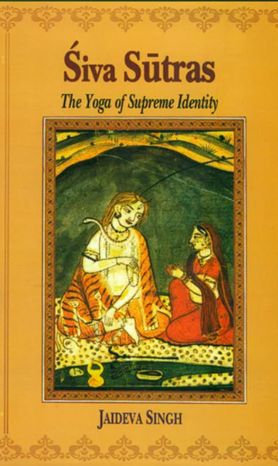


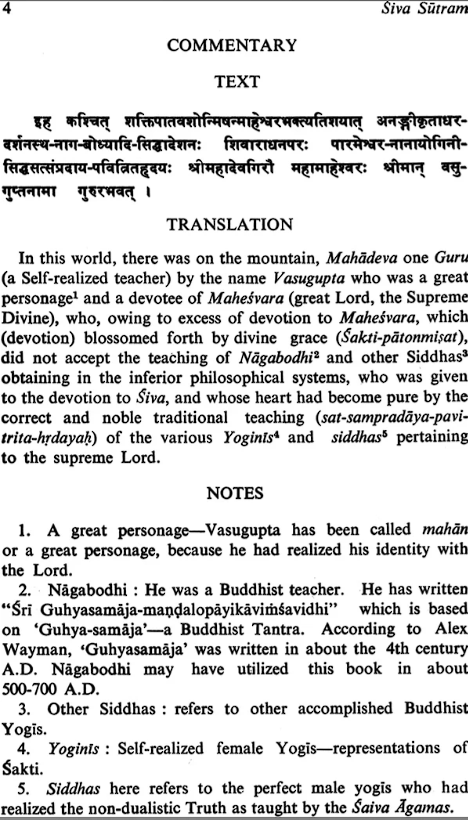
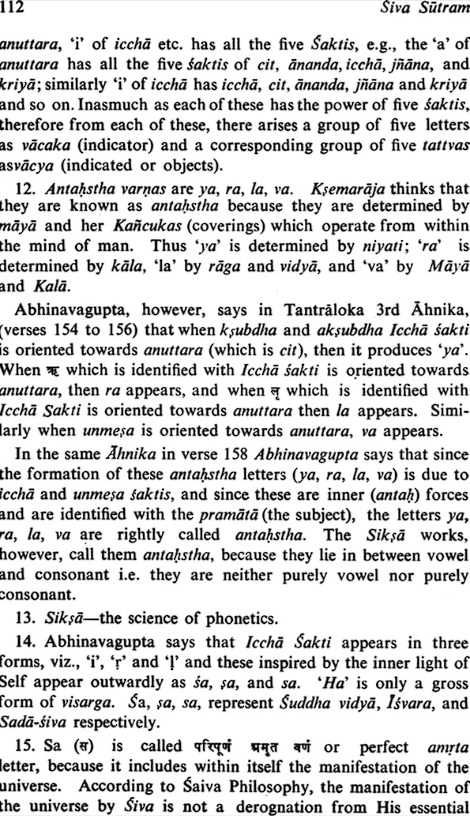
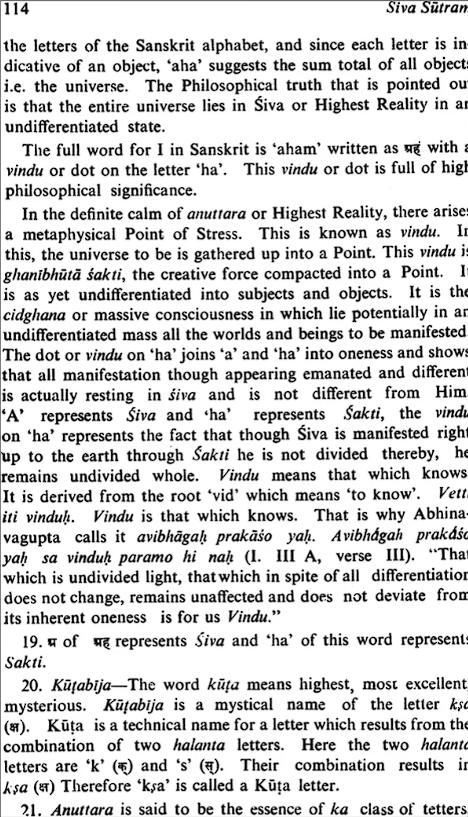

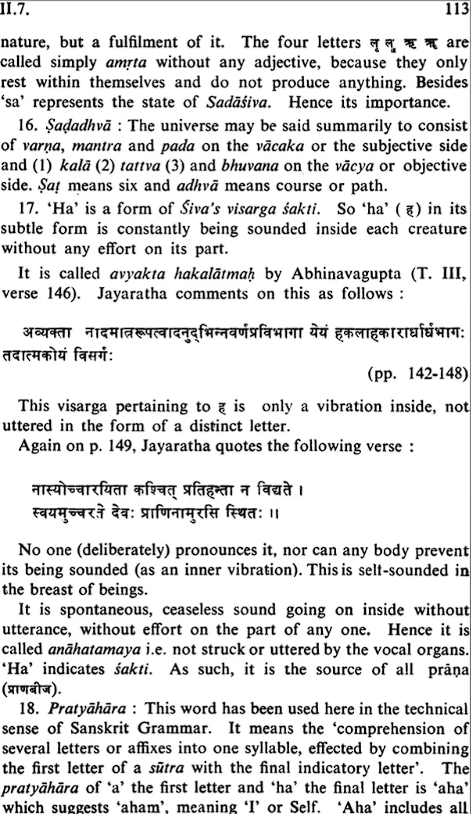
![Siva Sutras The Yoga of Supreme Identity [MLBD] 1 Shiva Sutras](https://saptarishisshop.com/wp-content/uploads/2023/12/Shiva-Sutras-278x300.jpg)
![Siva Sutras The Yoga of Supreme Identity [MLBD] 2 Shiva Sutras 2](https://saptarishisshop.com/wp-content/uploads/2023/12/Shiva-Sutras-2-300x300.png)
![Siva Sutras The Yoga of Supreme Identity [MLBD] 3 Shiva Sutras 1](https://saptarishisshop.com/wp-content/uploads/2023/12/Shiva-Sutras-1-300x300.png)
![Siva Sutras The Yoga of Supreme Identity [MLBD] 4 Shiva Sutras 4](https://saptarishisshop.com/wp-content/uploads/2023/12/Shiva-Sutras-4-300x300.png)
![Siva Sutras The Yoga of Supreme Identity [MLBD] 5 Shiva Sutras 5](https://saptarishisshop.com/wp-content/uploads/2023/12/Shiva-Sutras-5-300x300.png)
![Siva Sutras The Yoga of Supreme Identity [MLBD] 6 Shiva Sutras 7](https://saptarishisshop.com/wp-content/uploads/2023/12/Shiva-Sutras-7-300x300.png)
![Siva Sutras The Yoga of Supreme Identity [MLBD] 7 Shiva Sutras 3](https://saptarishisshop.com/wp-content/uploads/2023/12/Shiva-Sutras-3-300x300.png)
![Siva Sutras The Yoga of Supreme Identity [MLBD] 8 Shiva Sutras 6](https://saptarishisshop.com/wp-content/uploads/2023/12/Shiva-Sutras-6-300x300.png)

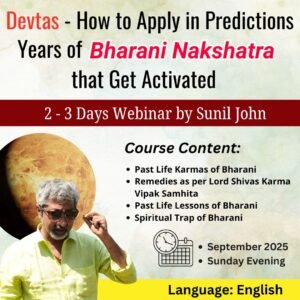

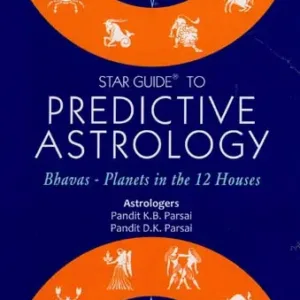

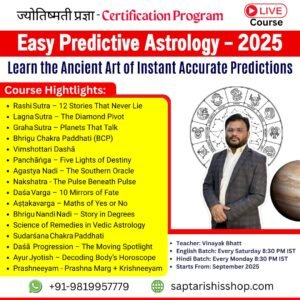



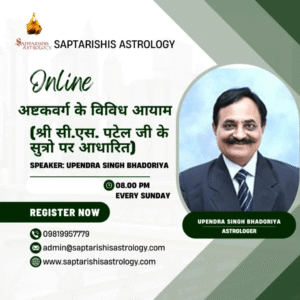
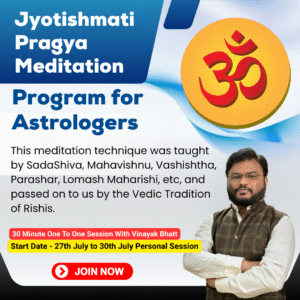


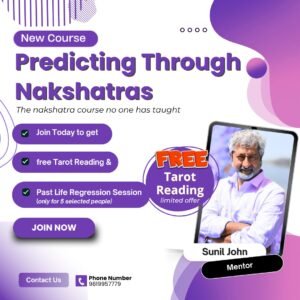

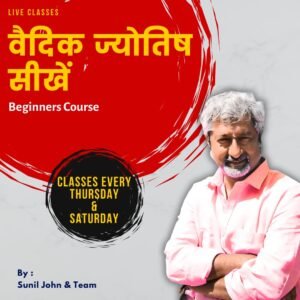

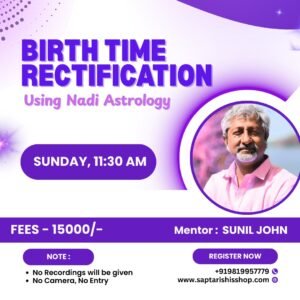
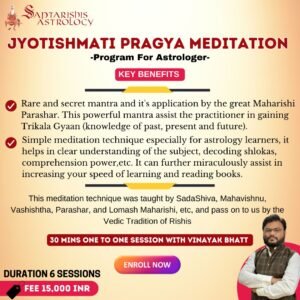
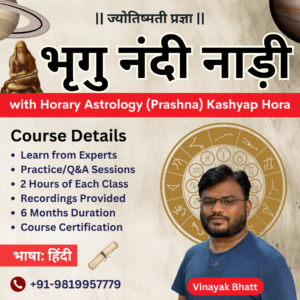

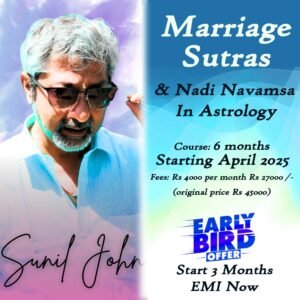
![Sawai Jai Singh and His Astronomy [MLBD] 9 Astronomy](https://saptarishisshop.com/wp-content/uploads/2023/12/Sawai-Jai-Singh-and-His-Astronomy-100x100.jpg)
![Solve Your Problems Astrologically [MLBD] 10 Solve Your Problems Astrologically](https://saptarishisshop.com/wp-content/uploads/2023/12/Solve-Your-Problems-Astrologically-100x100.jpg)
Reviews
There are no reviews yet.